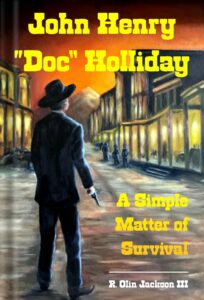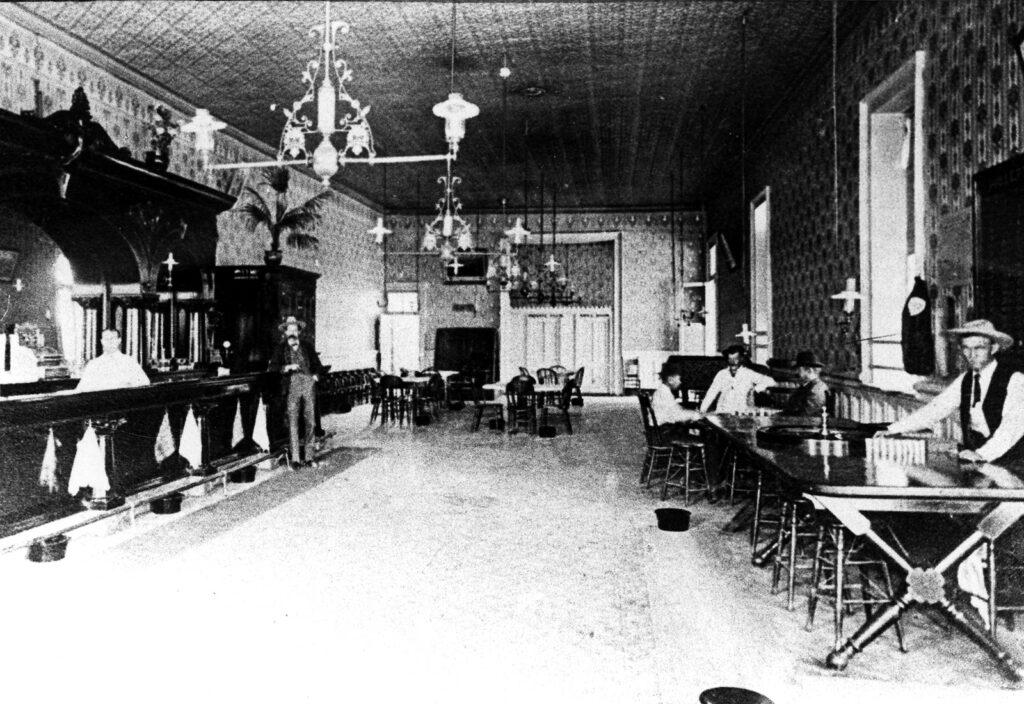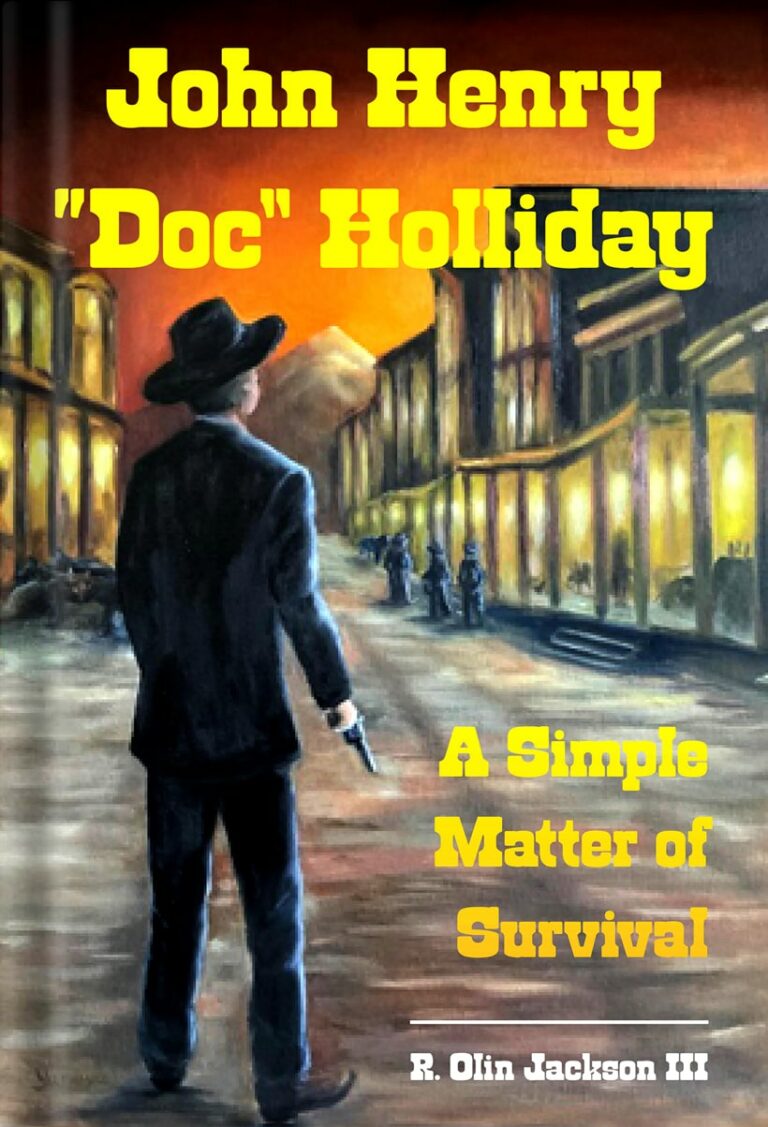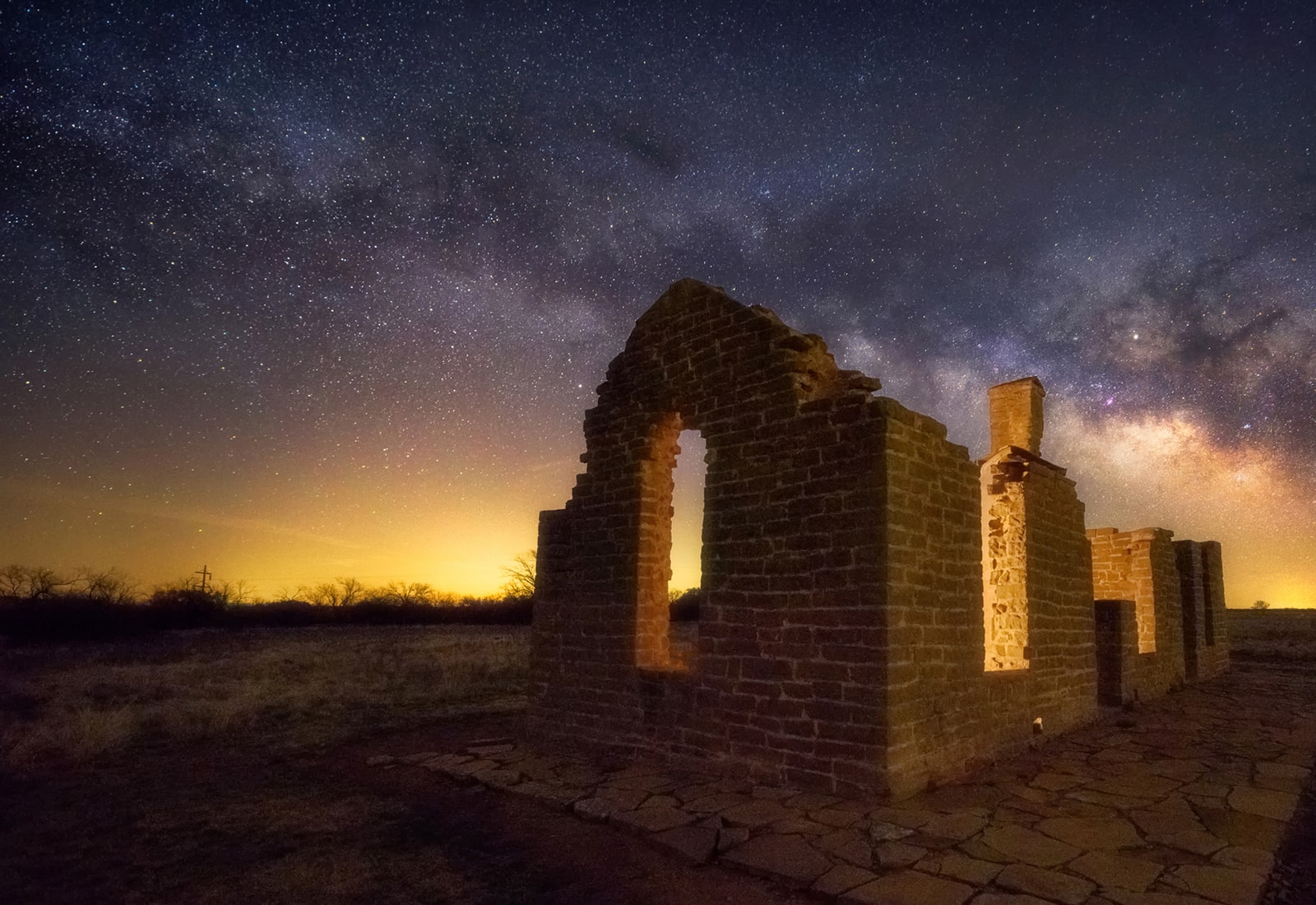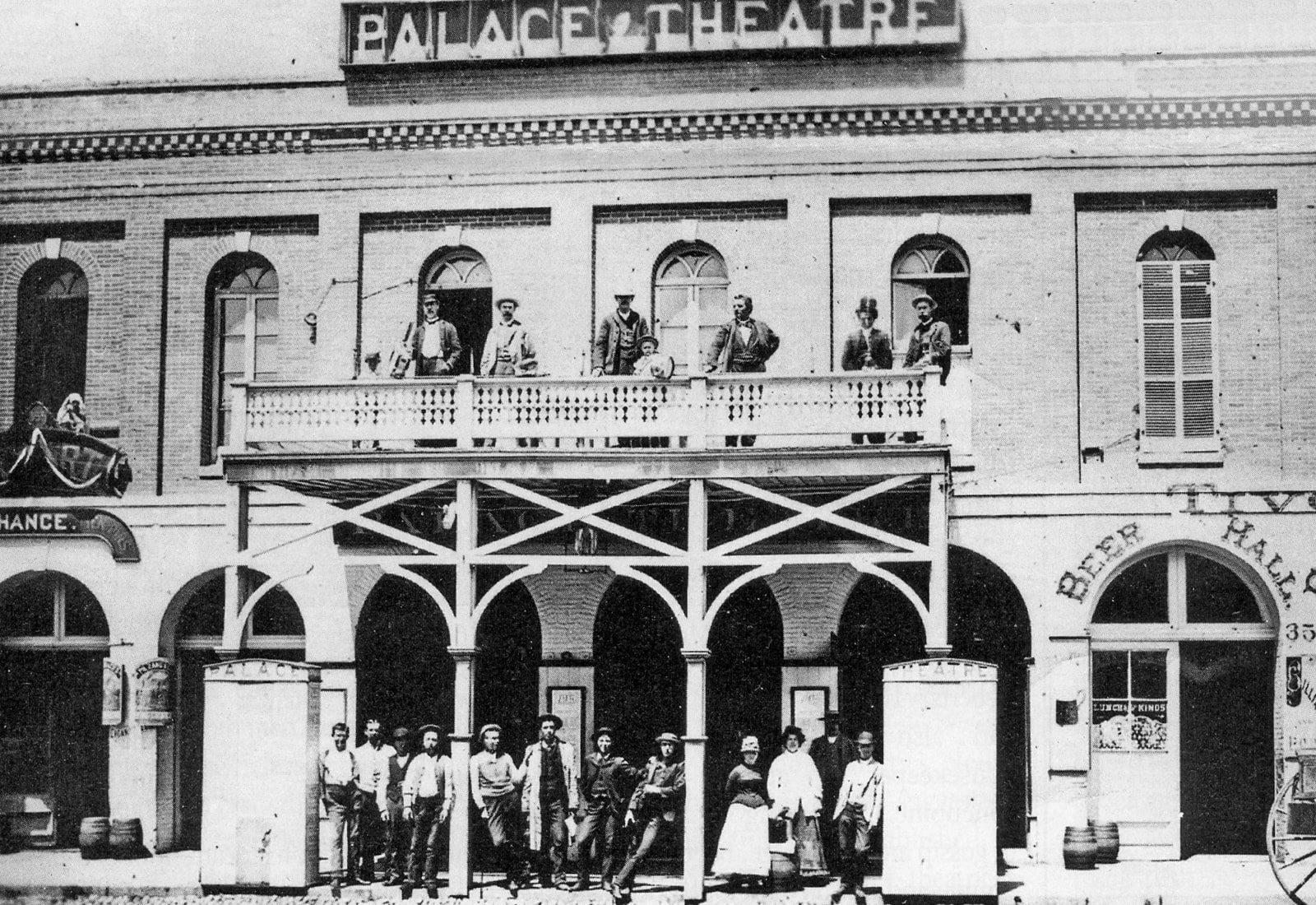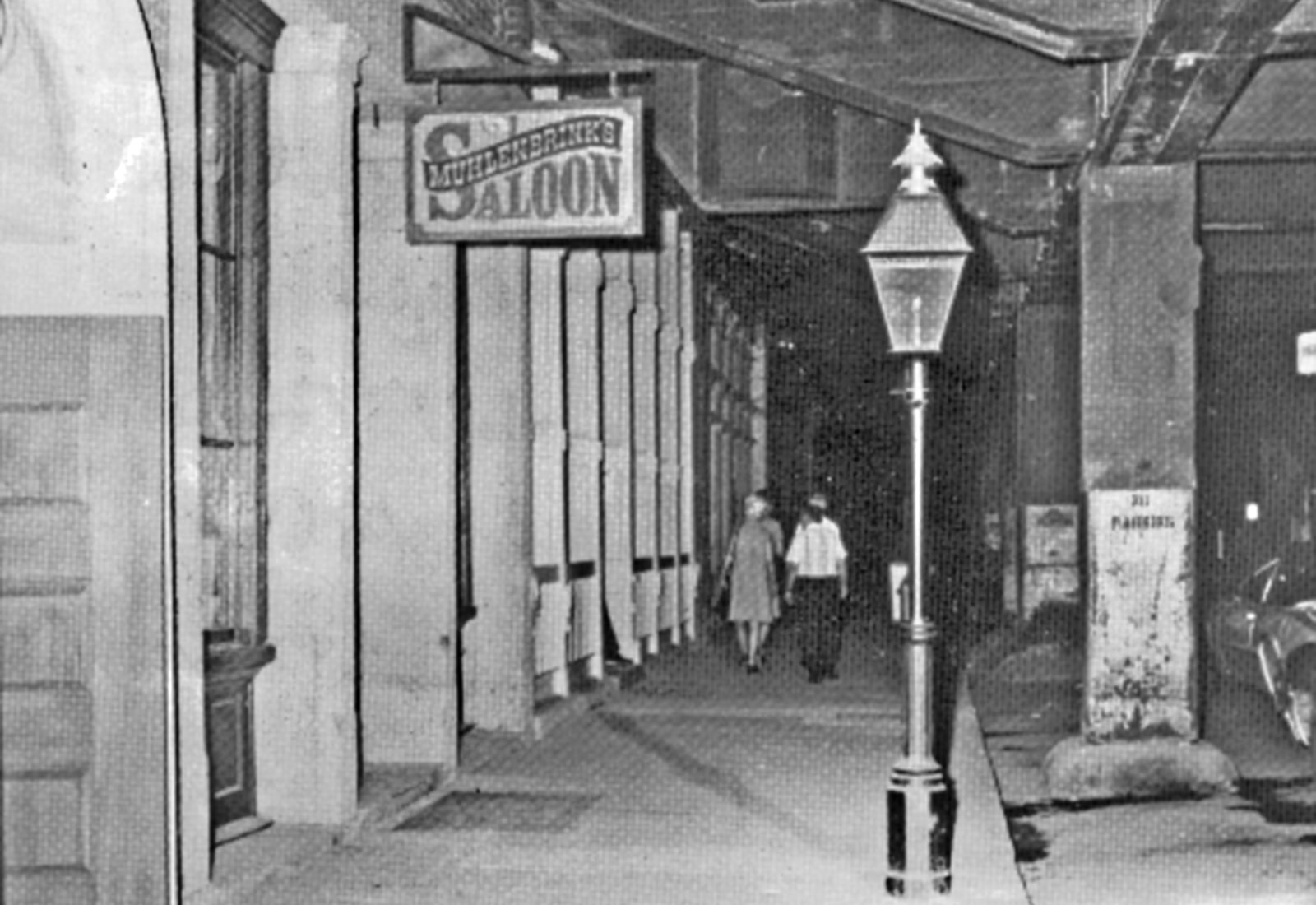Though he was a native son of the old South, John Henry Holliday earned lasting fame in the old West in the 1880s.
He was born August 14, 1851, in Georgia’s Spalding County in the small town of Griffin. In 1864, with the advancing threat of Gen. William Tecumseh Sherman’s forces moving through Georgia during the U.S. Civil War, John Henry’s father, Major Henry Burroughs Holliday, refugeed the family southward to Lowndes County where the 13-year-old youngster spent the remainder of his formative years, attending the Valdosta Institute and, upon graduation, leaving Georgia to attend the Pennsylvania College of Dental Surgery in Philadelphia. Following graduation from medical school and a return to Georgia for a short stint to practice dentistry in Atlanta, “Doc” began a vagabond journey to the West, never again to return to Georgia.
The wandering Georgian traveled to and took up temporary residence in many towns of the old West. Places such as Dallas, Fort Griffin and Jacksboro, Texas; Pueblo, Leadville, Glenwood Springs and Denver, Colorado; Cheyenne, Wyoming; Deadwood, South Dakota (He reportedly was there when his friend, James Butler Hickok, was murdered); Dodge City, Kansas; Las Vegas, New Mexico; Prescott, Tucson and Tombstone, Arizona; and numerous others all witnessed the comings and goings of the famous Georgian. No town held him or his interest more than two or three years.
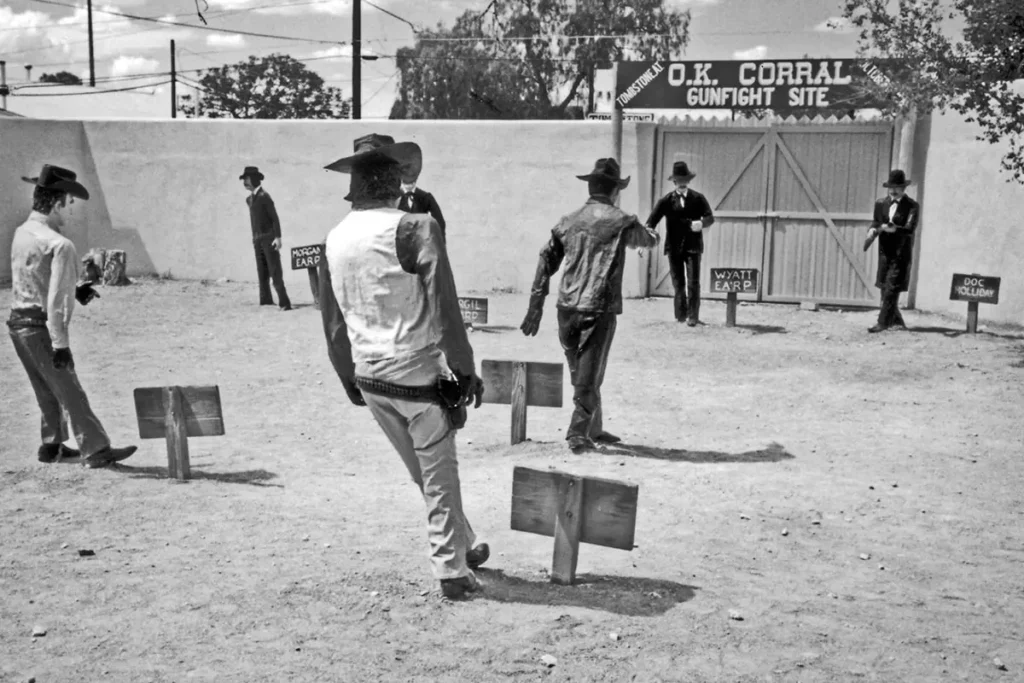
Despite all these travels, it was the town of Tombstone, Arizona Territory which truly defined him. The years he spent in this fast-growing gold mining town in the desert – while he was still reasonably healthy – earned him the bulk of his lasting fame. And it was for these years that he is best remembered.
By the early 1990s – with the Hollywood releases of movies such as Tombstone (1993) starring Val Kilmer, Kurt Russell, and Sam Elliott – the name “Doc” Holliday had reached almost mythic proportions in the folklore of America, but it was not always so. After the initial newspaper coverage of the actual shoot-out behind the O.K. Corral in Tombstone in October of 1881, much of the fame of Wyatt Earp; his brothers James, Virgil, Morgan and Warren; and Doc Holliday, died out over the ensuing years. After the huge water pump at the Tombstone silver mines failed and the price of silver plummeted in the late 1880s, the town had withered and died, and the exploits of the Earps and Doc Holliday were almost completely forgotten.
Old Tombstone Today
By the 1890s in Tombstone, most of the miners had departed Cochise County (which included Tombstone). Since the town was located in the middle of the desert, most people just boarded up their homes or stores and left on horseback, in buckboards, and covered wagons. Most of them also simply abandoned in Tombstone most of their possessions which wouldn’t fit into a covered wagon. Though Tombstone did get regular passenger train service on April 5, 1903, this was long after the good ol’ days of the town had come and gone.
As a result, Tombstone – despite the damage caused by two major fires – remained for many years much as Holliday and the Earps had left it. There really wasn’t any way to steal or even freely take substantial quantities of the relics left in Tombstone. Few were willing to chance it across the desert?
The now-quiet, dusty, and virtual ghost-town lay dormant in this manner for well over half a century – until the 1950s when American servicemen at nearby Fort Huachuca began taking weekend excursions to the historic site. It was also about this same time that several writers – following the success of a nationally-broadcast Western television series based upon the life of Wyatt Earp – realized the value in publishing the biographies of the old West icons from this vicinity.
Luckily, the handful of local townspeople who remained in Tombstone – which had quite literally receded into virtual ghost-town status by the 1950s – eventually realized they had a money-maker on their hands. They banded together and created a historic district out of the town, preserving it for future generations – and for the income it could generate.
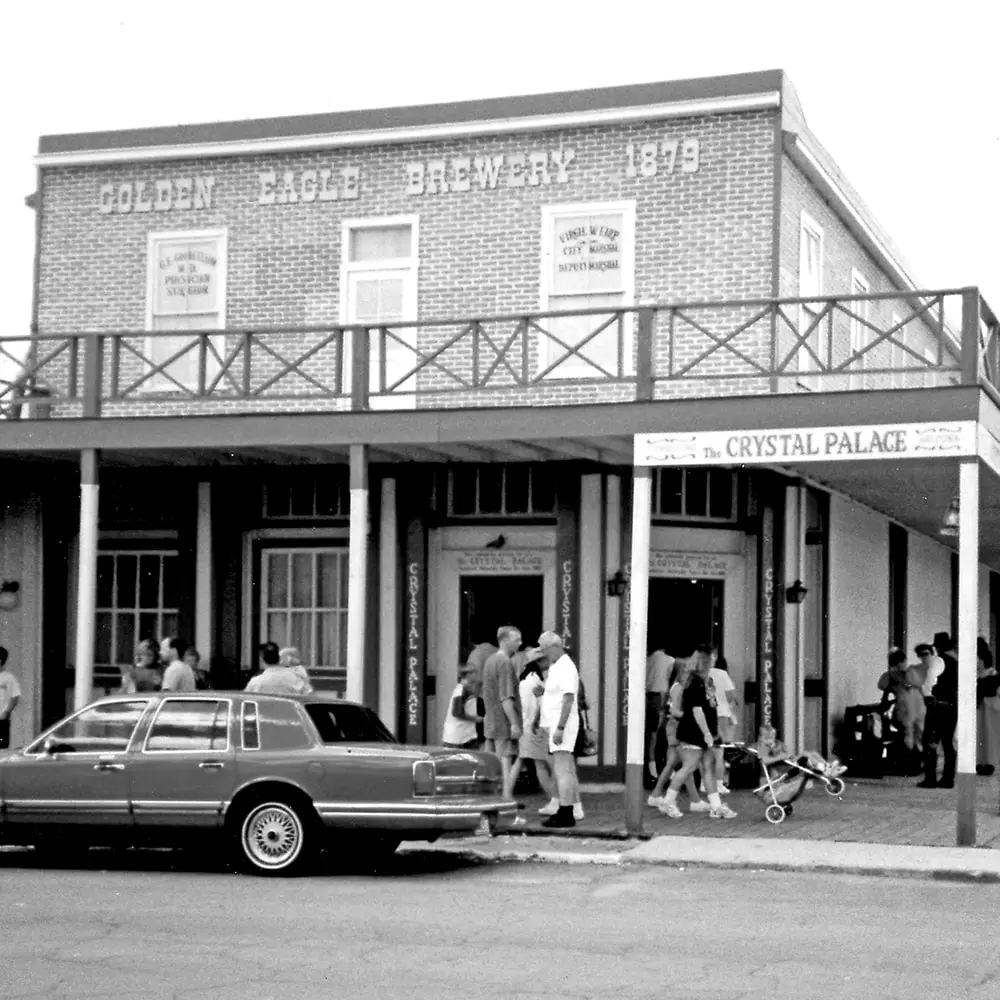
A number of the very structures which the Earps, Doc Holliday, Buckskin Frank Leslie, William Barclay “Bat” Masterson, Ike Clanton, Johnny Ringo, Texas John Slaughter, the McLaury brothers, Turkey Creek Jack Johnson, Texas Jack Vermilion and a host of other famous and notorious figures of the old West had frequented, amazingly still stand even today in Tombstone.
Portions of the original O.K. Corral site have survived, though much of it was destroyed by the aforementioned fires. The original Wells-Fargo building also still exists, as does the billiard parlor (though re-built) in which Morgan Earp was murdered.
Though also heavily damaged by fire in 1882, the Crystal Palace Saloon was quickly rebuilt. It was here and in the Oriental Saloon which once existed across the street that Holliday, the Earps and most of the other aforementioned historic figures spent much time in the 1880s, gambling, drinking, fighting and carousing. The rebuilt Crystal Palace may still be visited today as well. Even the home once owned and inhabited by Virgil Earp on First Street still stands (as of this writing in 2023), as do the bank, and other structures.
The Birdcage Theatre is one of the more prominent relics from that day. Built in December of 1881, it was a popular place to enjoy bawdy women, gambling, theatrical productions, and other forms of adult entertainment in old Tombstone. It, amazingly, has been virtually completely preserved – with full furnishings – from the days when it was frequented by all the above-described historic figures – a virtual museum to the town’s famed former inhabitants.
A Life In The West
John Henry Holliday was 21 in 1872, when he departed Georgia to begin his travels in the West. Interestingly, though doctors had advised that he had but a year or two left to live due to the tuberculosis in his lungs, he, in fact, lived for 15 more years, and in the interim, traveled throughout the last frontier in the continental United States, earning a well-deserved reputation as one of the deadliest gunmen walking the dusty streets of the old West.
Holliday has frequently been accused in print and folklore of being testy and irritable, but these likely were traits he acquired in his growing impatience with anyone unlucky enough to be perceived as wasting the Georgian’s rapidly-diminishing time on this earth. It also didn’t help matters that he liberally and regularly indulged in the “devil-water” of the West. In retrospect, who wouldn’t have been short-tempered under these circumstances?
Holliday also was known to be very gracious to those who were courteous to him, and his honor was the most valuable asset he possessed. When bullied or persecuted as a result of his frail condition and appearance, Doc invariably proved to be a game opponent – and even seemed to welcome a good “knock-down, drag-out,” even though he, more often than not, suffered the brunt of any injuries in these affairs. For that reason, he ultimately became quite adept in the use of firearms and knives for self-defense.
Though he often used what was known as a “pocket holster” (actually a reinforced pocket in his coat for carrying the heavy revolvers which dominated as weapons of that day), Doc Holliday was one of the first gunmen to use the new-fangled “shoulder holster.” His weapon of choice early in his western career was an 1851 Colt Navy revolver given him by his uncle, one of four. Holliday later carried a nickel-plated . 41 caliber Colt Thunderer which usually found refuge in his shoulder holster.
It has been documented in testimony from both Wyatt Earp and Bat Masterson that with these weapons, Doc Holliday was one of the deadliest shots that they both had ever known. His considerable reputation for adeptness with weapons eventually began preceding him wherever his travels took him, earning him respect from bullies much larger and stronger than he who normally would have quickly overpowered him.
Despite his ill-luck in the contraction of tuberculosis, John Henry Holliday lived what might otherwise be called a charmed life. Although he was involved in quite a few gunfights and other affrays during his days in the old West, he managed to avoid death’s door from these affairs, though he was wounded at least twice – once seriously. At the O.K. Corral gunfight in which he was credited with the death of at least one and possibly two of the opponents, a round from one of the McLaury revolvers grazed the pocket holster (in his coat) on his hip, causing him to suffer a bad bruise and a limp for several days, but little else. Few other prominent gunmen of the old West – Earp and Masterson interestingly being two exceptions – endured this life without being killed. Wyatt Earp, amazingly, was never even wounded.
All four of Wyatt’s brothers were seriously wounded at some point in their lives, and two of them were killed in gunfire. His brother Morgan was assassinated in Tombstone in 1882, and Warren was murdered in 1900 in a bar-fight in Wilcox, Arizona, just a few miles away. (Even though no one was arrested or charged in the incident, nor any inquest ever held, one can safely claim Warren was “murdered,” since he was unarmed at the time, and the .45 round fired at him was most intentional.)
James Butler “Wild Bill” Hickok was killed in Deadwood, South Dakota. Johnny Ringo and most of the Clantons and McLaurys were killed in and around Tombstone in the 1880s. William “Billy the Kid” Bonney was killed in New Mexico in 1881. Jesse James, Pat Garrett, Butch Cassidy and the Sundance Kid, Billy Claiborne and many others all also met with equally bloody deaths at about this same time. Doc, Wyatt, and Masterson, however, seemed almost invulnerable to bullets, despite their lifestyles.
A Friendship With Earp
Doc and Wyatt had become fast friends in Dodge City, Kansas, while Wyatt was a deputy city marshal there. Holliday reportedly came to Wyatt’s rescue (possibly saving his life) on two separate occasions – once in Dodge, and once again later in Tombstone – and Wyatt never forgot it. Though they quarreled in 1882 and went their separate ways, the two men nevertheless remained close friends to the end.
Wyatt was quoted as saying he enjoyed Doc’s company because the clever dentist “makes me laugh.” Doc was indeed known to have quite a sense of humor, as well as a love of practical jokes. According to one documented account, on one occasion when a stranger rode into Tombstone wearing a fancy suit and derby hat, Doc reportedly followed him throughout the town, gleefully tinkling a miniature sterling silver hand-held dinner bell everywhere the man went – much to the well-dressed gentleman’s uncomfortable chagrin.
There is so much history in the little town of Tombstone, that one would be well-advised to spend at least a weekend in explorations there if ever a visit is made to this historic site. Above and beyond the commercial buildings and homes in the town associated with Holliday and the Earps, many other sites in that vicinity were often frequented by other individuals who later gained fame on the frontier.
The Earps had traveled to Tombstone specifically in search of gambling and gold mining opportunities. Holliday, too, made the arduous trip to this desert town which had not only become renowned for its gold and silver mines, but for the plethora of gambling opportunities as well. Indeed, he spent most of his years beyond his 21st birthday in search of the pleasures of life because, as a doctor, he was well aware of the premature aging and early death which accompanied the dreaded tuberculosis from which he suffered. He had watched in angst as his mother before him – whom he dearly loved – had suffered greatly from the same disease before finally succumbing to it.
Doc’s adventures in Arizona Territory were many and varied. He was accompanied by his consort Katherine “Big-Nose Kate” Harony. The early days in Tombstone were a time of fun and delight for Holliday, but a criminal element composed of the Clantons, McLaurys, Johnny Ringo, and others eventually required the Earps – and thus also Doc – to take up arms against them.
Ultimately, in their last days in the Tombstone area in 1882, Doc, Wyatt Earp, Warren Earp, Texas Jack Vermillion, Turkey Creek Jack Johnson, Dan Tipton, and a handful of other close friends began what was known as “the Vendetta Ride.” They in essence hunted down the outlaws who had assassinated one Earp (Morgan) and maimed another (Virgil) for life and who had been protected for years by a corrupt judicial system in Cochise County. Months later, after much of the outlaw element had been “eliminated” (by what has been described by some as “vigilante justice”), Doc, Wyatt, and Warren began an odyssey across the West in a search for adventure and income opportunities.
Doc, with the remainder of the Vendetta cabal, drifted east to New Mexico Territory. At this point, the men reportedly separated. Turkey Creek Jack Johnson and Texas Jack Vermillion struck out on their own and faded into history. Eventually, Doc, Wyatt, Warren and Tipton drifted northward up to Colorado, to the gold and silver mining towns which offered a better refuge from the Arizona authorities, and an opportunity for income from the gambling morass which always attended this industry.
John Henry traveled for a time with Wyatt and Warren before striking out on his own. The Earps – at least Wyatt – didn’t mind camping out and sleeping upon the cold hard ground in the mountains of Colorado as they evaded Arizona law enforcement authorities, but John Henry Holliday was accustomed to a bit more refinery, and his extreme illness reinforced this need for more hospitable circumstances. He therefore exchanged this “uncivil” life of camping and/or otherwise “roughing it in the mountains” for the bright lights and gambling mecca of Denver. The Earps and Tipton spent the summer of 1882 in Gunnison, with Doc traveling down from Denver to visit them there for a brief time.
For the rest of their days, both Doc and Wyatt did little more than travel and enjoy life. Neither of them ever owned a home after leaving Tombstone (Doc never owned a home at all, preferring to live in hotels and rooming houses his entire adult life), and they both literally went wherever the wind blew them.
The Lonely Years
In the ensuing years, John Henry Holliday essentially traveled alone. He had abandoned his female consort – “Big Nose” Katherine Haroney – but continued to frequent the mining towns where quick money and poorly-schooled gamblers often offered steady income. The locations of these gold and silver-strike meccas invariably involved the extremes of nature – either the horrendous heat of the desert, or the freezing cold of the 12,000-foot Rocky Mountains. Each new extreme took its toll on the stamina of Doc Holliday.
The Georgian also was extremely limited by this point in his options for income. He now had such a reputation as “a lunger” that he was completely unable to ply his original trade as a dentist. Gambling in gold and silver-mining towns became his sole source of income. . . . and it was a lonely preoccupation. He wasn’t the only professional gambler on the circuit, so the “pickings” weren’t always so easy.
Traveling from town to town and saloon to saloon, John Henry was able to maintain a reasonably steady income for several of the ensuing years, but with each new town, his physical appearance more and more became that of one who was weaker and weaker. This ultimately attracted a growing line-up of individuals suddenly willing to challenge the Georgian, hoping to earn the acclaim which would come with ending the life of the famed “Doc” Holliday.
And not only was he meeting new challengers, the fact that his travels were predominantly confined to gold and silver mining towns meant that he inevitably began meeting old enemies from his Tombstone days as well.
